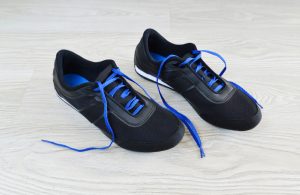
For example you might take a photograph of your car but you may not want to publicize your number plate. Or you may have a photograph of your child playing with another child and, while you’re happy to share the photograph you may not want the other child to be identifiable. The easiest way to hide information like this is to pixelate the information by replacing it with an overlay of colored squares which blend into the photograph and hide the information that you don’t want to show.
In other situations you may simply want to blur the edges of a photo because the edges contain no interesting content. Blurring the edges will draw the viewer’s eye to the subject of the photo. While both these effects allow you to remove or hide some part of a photo they differ in how you achieve each of them. Here we’ll show you how to create each of these effects using Paint.net.
If you haven’t downloaded and installed Paint.net then visit issue 1 of this newsletter to see how to get hold of this program and install it. We’ll assume that that’s all taken care of and we’ll start with our pixilation effect.











